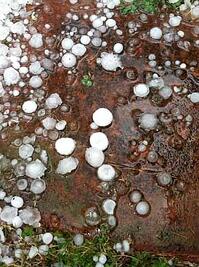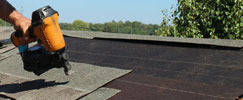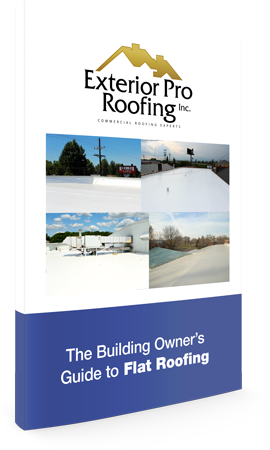Here in Southern Indiana, many of us are not surprised by hail damage considering we are prone to hail in storms or in severe thunderstorms. We have already seen 3 or 4 storms with hail so far this spring and more than likely we will see some more before winter kicks in. There really is not a full way to protect your roof from hail but there are roofing materials that have a better resistance than others. Shingles have begun to be thicker to provide more resistance as well as other roofing systems most commonly found on commercial buildings. The best way to protect your home or business is by doing some research on roofing materials and on the Institute for Business and home Safety (IBHS) website.http://www.disastersafety.org

Often there are tests completed by IBHS to classify roofing material standards that they need to pass against many different conditions like hail and high winds. In the 1990s when IBHS began studying roof materials and weather conditions to see how they withstand. Now you see classes on roofing materials that show they have a good resistance. For the hail resistance there is a UL Standard 2218 with classes 1-4, four being the best resistance; this is commonly found on materials like shingles. They also did a classification 4470 for low slope or flat roofing materials like single-ply, Polymer-Modified Bitumen, built of roofs known as BURS and liquid applied roofs. They will either shower an approval code of 1-MH for hail or 1-SH for sever hail. To get more information on different roof materials and even more recent studies you can go to their website https://www.disastersafety.org/hail/protect-businesses-from-damage/. Some materials do not do so well in hail storms that especially can have 2 inch ice balls like metal roofs, you may not get a tear or breakage but there will be some denting.
 One thing to help protect your roof would to be roof and re-roof with more resistant materials. More and more they are studying roofing materials for many different weather conditions. Keeping updated can help. Sometimes roofs may have to be replaced more often depending on the area that you live and the roofing materials class that you have. Another good idea would be to check on your insurance policy for your home or building and see if your insurance company covers hail damage and how they go about paying for the damage. No matter what type of roof you have or the material used it is a good idea to check out different roofing materials that will work for your home or bulging so that when you have to replace your roofing system, you will have an idea on what to ask your roofing contractor. So far this year we have not had big size hail and hopefully will not have to worry about a severe hail storm, but if you do get some hail damage to your roof, please give us a call and see how we can help you.
One thing to help protect your roof would to be roof and re-roof with more resistant materials. More and more they are studying roofing materials for many different weather conditions. Keeping updated can help. Sometimes roofs may have to be replaced more often depending on the area that you live and the roofing materials class that you have. Another good idea would be to check on your insurance policy for your home or building and see if your insurance company covers hail damage and how they go about paying for the damage. No matter what type of roof you have or the material used it is a good idea to check out different roofing materials that will work for your home or bulging so that when you have to replace your roofing system, you will have an idea on what to ask your roofing contractor. So far this year we have not had big size hail and hopefully will not have to worry about a severe hail storm, but if you do get some hail damage to your roof, please give us a call and see how we can help you.







